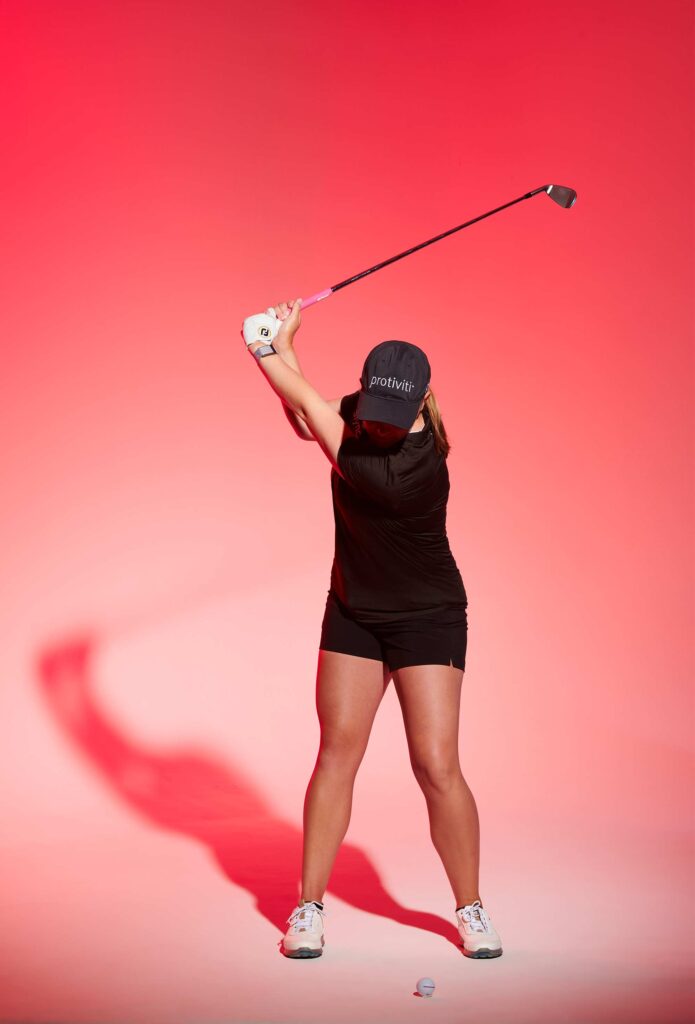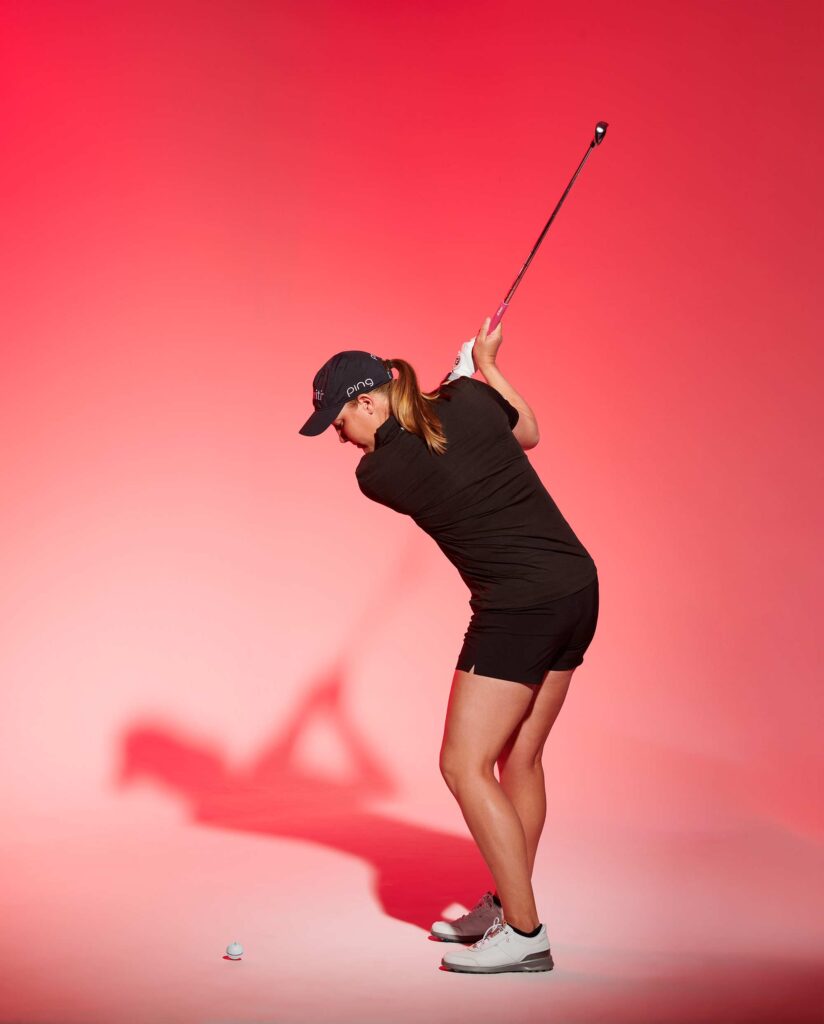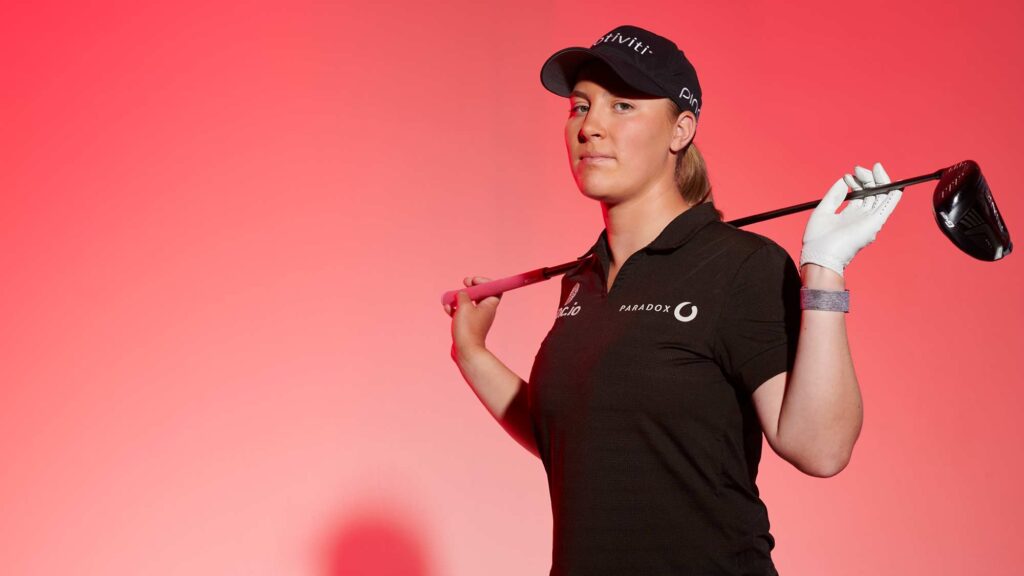Try my two backswing keys for more consistent contact.
Photos by Mackenzie Stroh
You know how athletes talk about being in the flow state? That’s what happened to me during the third round of last year’s Chevron Championship, when I made nine birdies and shot an eight-under-par 64 – low round of the tournament by two shots. I hit 13 of 14 fairways and 15 of 18 greens in regulation. I was out of my mind and completely in my body. It was the same feeling I had when I won the inaugural Augusta National Women’s Amateur in 2019. Though no athlete can teach you how to get into this flow state – I wish I knew how to control it myself – I can help you improve your ball-striking and hit more fairway and green finders. Here are two key moves my coach, Ed Oldham, and I work on to keep my contact consistent and my shot shape a predictable, easy-to-play cut.
JENNIFER KUPCHO won her first three LPGA events in 2022, including her first Major at the Chevron Championship.

Turn the Lead Shoulder OVER the Ball
I have something in common with a lot of amateurs: I’m pretty limited in how far I can rotate my shoulders. It helps me to have a checkpoint I know I have to reach to complete my backswing turn. The fuller the shoulder turn, the easier it is to route the club down from the inside and the less likely you are to come down over the top. For me, if I can rotate my lead shoulder far enough under my chin to where it’s directly over the ball [above], I know I’ve made a deep turn. That’s my checkpoint. If you draw a line straight down from the tip of your shoulder and it hits the ground left of where the ball is, you haven’t turned enough.

Rotate the Right Hip Pocket Back
Rotation is just as important for the hips as it is for the shoulders. The biggest mistake I see amateurs make is that they sway their hips to the right going back instead of turning. One way to tell that you’ve turned your hips properly is to stop at the top of the backswing and look at the right back pocket on your shorts. If it’s closer to the target than it was at address [above], you’ve rotated and not swayed your hips. Getting a full hip turn going back will help you transfer your weight forward on the downswing and keep you from bottoming the club out early with an open clubface.

It’s OK to be angry
After a poor shot, a lot of amateurs don’t know how to react. Some overreact and get really angry with themselves. Others show little to no emotion. I’m not afraid to react. I might even bang my club into the ground. The key is to get your frustration out without being too much of a distraction so that you have a clear mind for your next shot – and your frustration doesn’t carry over into future shots. Bad shots are going to happen, and sometimes underreacting can be just as bad as overreacting.



